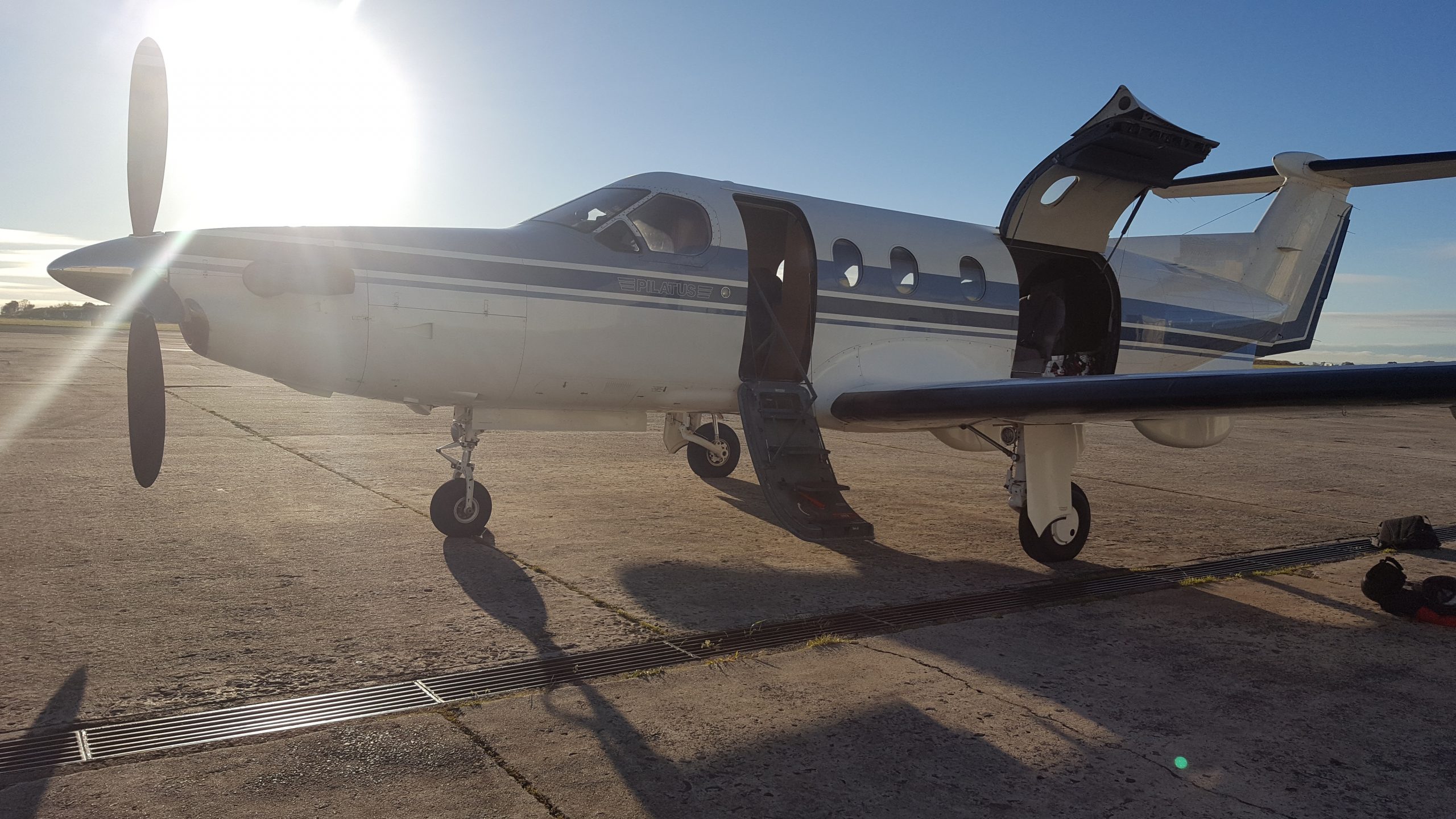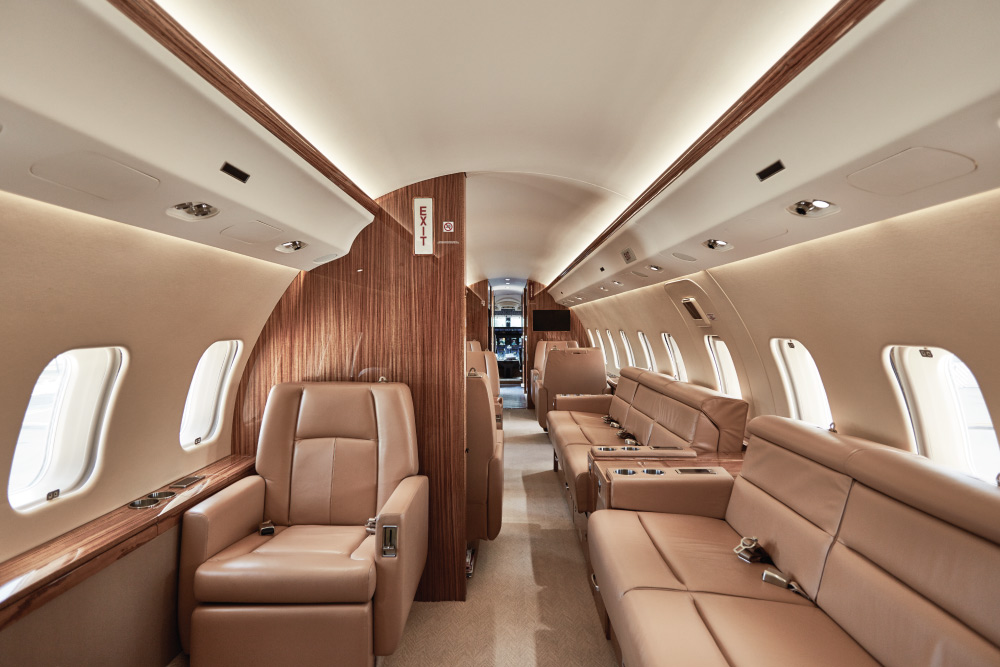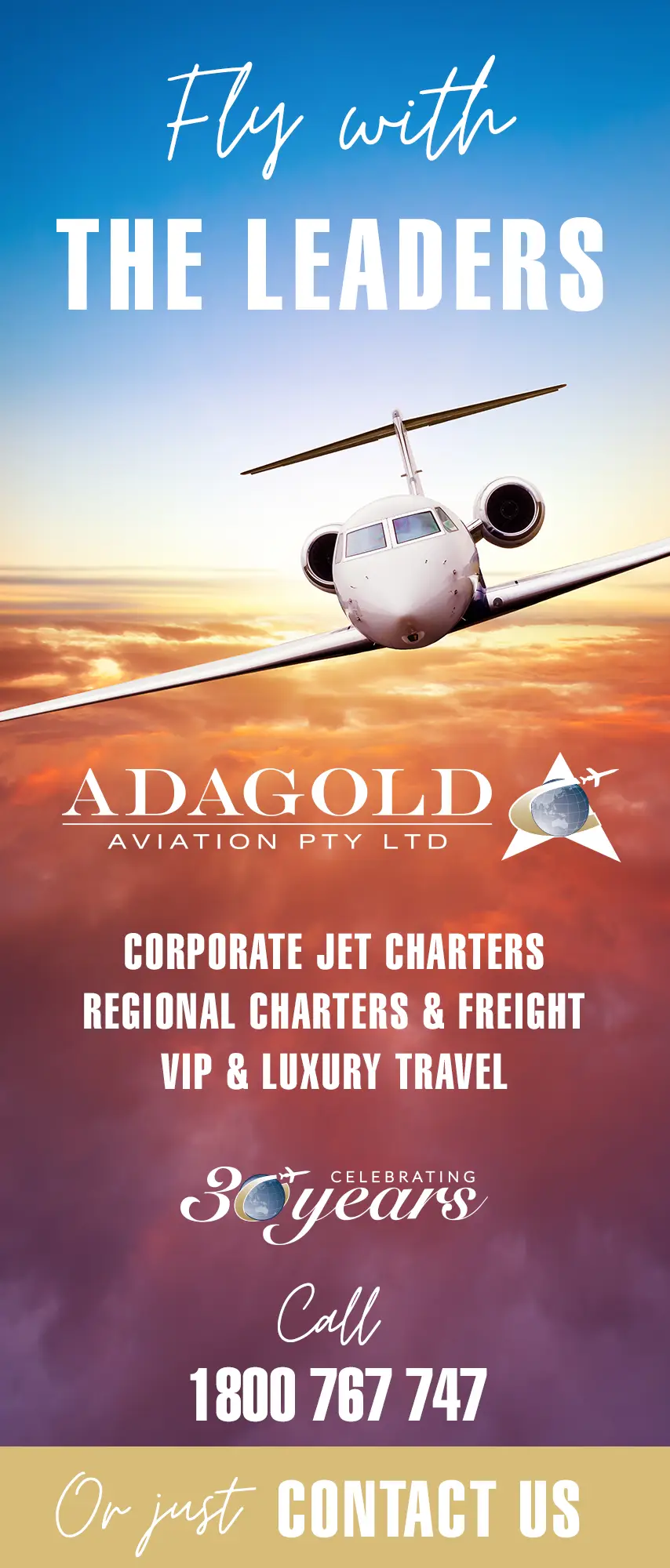Ever found yourself stuck at a regional airport seeing “cancelled” or “delayed” next to your flight on the board? There’s a better way: aircraft charter.
Aircraft charter means hiring an entire aircraft and pilot to take you from point A to point B – you get the whole plane to yourself. Unlike commercial flights where you’re at the airline’s mercy, charter gives you complete control over when you fly and where you go.

When you charter, you’re renting the entire plane exclusively for your group. No crying babies, no strangers – just you and whoever you choose. Sometimes called A-B charter, it simply means getting from point A to point B on your terms.
In Australia’s massive landscape, aircraft charter is often the only practical way to reach remote destinations. From mining operations in Western Australia to luxury resorts in Queensland, charter aircraft access thousands of locations that commercial airlines don’t service.
The Australian charter industry tackles unique challenges – scorching heat, remote airstrips, and vast distances. Adagold Aviation knows how to get you where you need to go, regardless of how challenging the destination.
Charter eliminates commercial airline constraints. Need to leave at 6:47pm because that’s when your meeting ends? Done. Want to fly direct to a remote location? Easy. Whether it’s a business deal, family reunion, or specialised equipment transport, charter works around your schedule, not the other way around.
The Aircraft Charter Booking Journey
Pre-Charter Planning: Getting Charter-Ready
Smart charter users ask: “What does this save me?” The answer is usually time, money (for groups), convenience, and access to destinations that commercial airlines don’t reach. Charter works best when you value schedule flexibility, need to access remote destinations, or are travelling with groups where coordination matters more than hunting for cheap individual tickets.
Charter makes sense for mining executives reaching remote sites where the nearest commercial airport is a day’s drive away, or business travellers when commercial schedules don’t align with critical meetings. If you need confidential discussions, charter provides actual privacy instead of eavesdropping from neighbouring seats.
Mission profiling means understanding what you actually need – flying solo or coordinating eight family members? Space for golf clubs or mining equipment? Adagold Aviation’s experienced team cuts through the confusion to determine whether charter delivers genuine value over commercial alternatives.
Selecting Your Charter Partner
Choosing charter aircraft involves more than comparing prices – you need to verify safety credentials and operational standards. In Australia, legitimate charter operators must hold an Air Operator’s Certificate (AOC) from CASA (Civil Aviation Safety Authority), which requires rigorous safety standards, regular inspections, and comprehensive insurance coverage.
Quality providers offer clear contracts spelling out aircraft specifications, crew qualifications, weather delay policies, and exactly what’s included in the quote. If someone rushes you through paperwork or seems vague about details, that’s a red flag.
Alternatively, you could work with a charter specialist like Adagold Aviation, who handles the operator vetting process for you. They maintain relationships with CASA-certified operators, negotiate competitive rates, and ensure you’re working with reputable providers who meet strict Australian safety standards – taking the guesswork out of charter selection.
Aircraft Selection and Mission Matching
Matching the right aircraft to your mission is crucial – like finding the perfect tool for a job that involves travelling at 500km/h.
A Citation CJ3 excels for business travel between major cities, but may struggle with short, rough airstrips where a Pilatus PC12 thrives. Consider baggage capacity, range requirements, and whether your destination airport can handle your chosen aircraft.

Experience matters here: hot weather reduces performance, high-altitude airports limit payload, and some runways are unforgiving. Experienced coordinators know which aircraft can safely handle your mission with appropriate reserves. Whether you need the versatility of a King Air 350 or the range of a Global Express, proper selection separates successful charters from expensive mistakes.

From Booking to Boarding
Pre-flight coordination transforms charter from basic transport into something tailored to your needs. Quality operators coordinate ground transport, arrange proper catering, and handle customs requirements without you thinking about it.
Share your preferences early – hate airline food? Need workspace for confidential calls? Travelling internationally and worried about paperwork? The Adagold Team will coordinate everything. This personalised approach separates charter from commercial aviation’s “take it or leave it” service.
Day-of-departure shows charter’s real value. Arrive 15-30 minutes before departure, complete a brief security check, and board immediately. Your crew conducts a personalised safety briefing and ensures you’re comfortable before departure. The streamlined process means you can use travel time productively rather than recovering from commercial aviation stress.

Charter Economics and Strategic Planning
Understanding Charter Costs
Charter pricing reflects numerous factors beyond simple hourly rates, including aircraft positioning and de-positioning, crew expenses, fuel availability, and airport fees. Smart charter users understand that the lowest quote isn’t always the best value – consider aircraft safety, condition, crew experience, and operator reputation alongside price. Peak travel periods and popular destinations command premium rates, whilst off-peak timing and flexible routing can generate significant savings.
Cost optimisation starts with understanding charter market dynamics. Empty leg flights offer substantial discounts, though they require schedule flexibility and can carry a hefty cancellation fee. Longer trips often provide better value, as fixed costs like crew expenses spread across more flight time. Our comprehensive charter cost guide provides detailed insights into Australian charter pricing.
Charter vs Ownership Decision Framework
The charter versus ownership decision extends far beyond simple flight hour calculations, encompassing financial risk, operational flexibility, and strategic business considerations. Even organisations flying 200+ hours annually often discover that aircraft charter provides superior value when considering true total costs. Aircraft ownership creates substantial financial exposure through depreciation, which can reach 20-25% annually, representing hundreds of thousands in lost value regardless of usage.
Hidden ownership costs include accelerating maintenance requirements, crew training and retention, insurance premiums that increase with aircraft age, hangar fees, and regulatory compliance expenses. When your owned aircraft requires maintenance or encounters mechanical issues, your travel plans halt completely. Charter users maintain schedule reliability through access to backup aircraft and professional operators who manage all operational complexities, preserving capital for revenue-generating investments whilst eliminating the substantial risks and operational burdens of ownership.

Making Charter Work for You
When you really think about it, aircraft charter is about reclaiming control over one of business’s most critical resources – time. Whether it’s reaching remote locations that would otherwise require days of commercial flights and driving, coordinating seamless group travel, or maintaining schedule flexibility when opportunities arise, charter provides capabilities that regular airlines simply cannot match.
The key to successful charter lies in understanding that it’s not just about the aircraft – it’s about partnering with people who understand your specific requirements and deliver consistent, reliable service. From initial mission planning through post-flight follow-up, quality charter specialists like Adagold Aviation manage every detail to ensure your journey exceeds expectations.
At Adagold Aviation, we’ve spent years perfecting the charter experience for Australian travellers. Whether you’re heading to a remote mining operation, luxury resort, or critical business meeting, our team understands the unique challenges of Australian aviation and how to overcome them efficiently.
Ready to discover how aircraft charter can transform your approach to travel? Contact Adagold Aviation today for a personalised consultation. Our charter specialists excel at matching clients with perfect aircraft solutions whilst ensuring every flight delivers exceptional value and service.
Connect with our charter experts to discuss your specific requirements, or explore our comprehensive aircraft charter options to discover the perfect solution for your next journey.
Frequently Asked Questions
What does aircraft charter mean?
Aircraft charter refers to hiring an entire aircraft and crew for exclusive use on specific, unscheduled flights rather than purchasing individual seats on commercial airline services. This arrangement provides significant control over key flight details, including departure times, destinations, and passenger lists, whilst working within aviation regulations and operational constraints. Charter clients collaborate with experienced specialists like Adagold Aviation to customise flight arrangements according to their specific requirements and preferences.
The charter process differs fundamentally from purchasing individual seats on commercial flights, where airlines control schedules, routes, and operational decisions. Charter flights are sometimes referred to as A-B charter, indicating point-to-point transport tailored to your specific itinerary. Rather than adapting your schedule to commercial airline timetables, aircraft charter allows you to travel when and where you need to go, providing ultimate flexibility for business, leisure, or specialised transport requirements.
Charter operations typically fall under Australian commercial aviation regulations, which establish higher safety and operational standards than private flights whilst maintaining the flexibility that makes charter attractive. These regulations require operators to maintain comprehensive safety management systems, conduct regular inspections, and carry substantial insurance coverage. Unlike rigid commercial airline schedules, charter operators can respond dynamically to client requirements whilst maintaining professional safety standards.
Adagold Aviation’s charter specialists work closely with clients to ensure every charter detail aligns with specific requirements, from initial booking through to destination arrival. The process involves coordinating all aspects of your flight, from aircraft selection and crew assignment to ground handling, weather considerations and catering services, creating a seamless travel experience tailored to your exact needs.
How much does it cost to charter an aircraft?
Aircraft charter costs vary significantly based on multiple factors, with aircraft type being the primary determinant. Light jets such as the Citation Mustang offer the most accessible charter rates, whilst heavy jets like the Gulfstream G650ER command premium pricing due to their enhanced capabilities and luxury amenities. Mid-size jets, including aircraft like the Citation CJ3 and Embraer Phenom 300E, offer enhanced space and longer range capabilities whilst maintaining reasonable operating costs.
Market dynamics significantly influence charter pricing beyond basic hourly rates. Peak travel periods, popular destinations, and last-minute bookings typically command premium rates, whilst off-peak timing and flexible routing can generate substantial savings. Aircraft positioning costs affect pricing when aircraft must travel empty to reach your departure point.
Turboprop aircraft such as the Pilatus PC12 and King Air series provide cost-effective solutions for regional transport and shorter flights, often proving more economical than jets for routes under 1,500 kilometres where speed advantages are less significant. These aircraft combine practical performance with reasonable operating costs, offering excellent value for specific missions where jet capabilities aren’t required.
Charter costs include aircraft hire, crew, fuel, airport fees, and operational expenses, providing transparent pricing that eliminates the hidden fees common with commercial aviation. Smart charter users understand that the lowest quote isn’t always the best value – consider safety, aircraft condition, crew experience, and operator reputation alongside price. For detailed pricing information specific to your travel requirements, consult our comprehensive charter cost guide or contact our team for personalised quotations.
How much does it cost to charter a flight in Australia?
Charter flight costs in Australia reflect the diverse range of aircraft available and the specific operational challenges of Australian aviation. The Australian charter market serves unique requirements, from accessing remote mining sites to luxury resort destinations, with pricing reflecting the specialised capabilities required for these missions. Light jets accommodating 4-6 passengers, such as the Cessna Citation series, provide accessible entry points into private aviation with competitive rates for business and leisure travel.
Larger aircraft including the Embraer Phenom 300E, Pilatus PC-24, and Citation CJ3 offer enhanced capacity and range capabilities for 6-8 passengers, proving popular for business travel and group transport where comfort and productivity are essential. These aircraft provide excellent value for medium-range flights within Australia and to nearby international destinations.
Australian charter operations often involve accessing remote destinations and challenging airports, factors that influence pricing based on operational complexity and aircraft capabilities required. Regional transport using aircraft like the King Air 350 or Cessna Caravan provides excellent value for mining operations and remote location access, where their short-field performance and reliability prove invaluable.
Adagold’s charter pricing includes all operational costs, providing transparent budgeting for travel expenses without the surprise fees common in commercial aviation. Factors influencing costs include aircraft size, flight duration, destination airports, seasonal demand, and specific mission requirements such as cargo capacity or challenging airport access. The vast distances and unique operational requirements of Australian aviation create pricing structures that reflect these realities whilst delivering exceptional value for travellers who need reliable access to remote destinations. Contact our team for detailed pricing information tailored to your specific Australian charter requirements, or explore our charter cost guide for some pricing insights.
Is it cheaper to charter or own a plane?
The choice between aircraft charter and ownership initially appears to favour ownership for high-frequency users, yet the reality proves far more complex and heavily favours charter for most users. Even for travellers exceeding 200 flight hours annually, aircraft charter often provides superior value when considering total cost of ownership, operational flexibility, and risk management factors that ownership creates.
Aircraft ownership involves substantial hidden costs beyond the initial purchase price, including accelerating maintenance requirements, crew training and retention, insurance premiums that increase with aircraft age, hangar fees, and regulatory compliance expenses. Aircraft depreciation alone can represent 15-25% of initial value annually, creating significant financial exposure that charter completely eliminates. When your owned aircraft requires scheduled maintenance or unexpected repairs, your travel plans halt completely – charter users simply select an alternative aircraft and maintain their schedules.
The operational burden of ownership includes crew management, regulatory compliance, insurance coordination, and maintenance scheduling – responsibilities that distract from core business activities whilst creating substantial ongoing costs. Maintenance costs escalate unpredictably as aircraft age, with major inspections and component replacements creating unexpected six-figure expenses that disrupt both budgets and travel schedules. Even organisations flying frequently often discover that ownership ties up significant capital that could generate returns in core business activities.
Charter provides strategic advantages that ownership simply cannot match: access to the newest aircraft with latest safety technology, the ability to select optimal aircraft for each specific mission, and elimination of maintenance-related flight cancellations. Whether you need a Citation CJ4 for business travel, a King Air 350 for regional transport, or a Global Express for international flights, charter eliminates the compromises inherent in owning a single aircraft type whilst providing superior flexibility, cost control, and risk management for smart aviation users.


